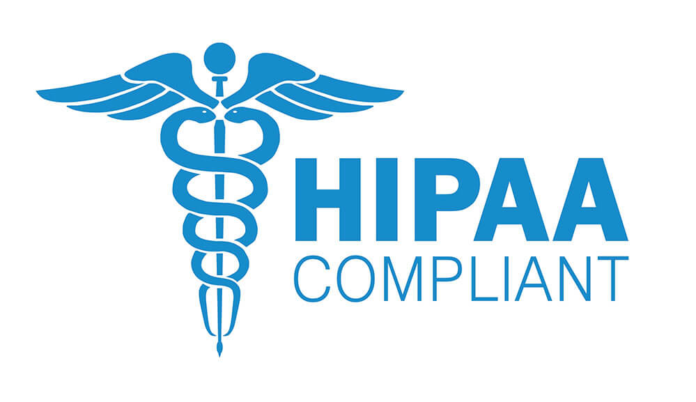If you’ve ever been to a doctor’s office or a hospital, you’ve probably seen signs reminding you of HIPAA. And HIPAA compliant app development is a complicated process that you have to be ready for. But what exactly is HIPAA, and why does it matter for applications?
What is HIPAA?
HIPAA stands for the Health Insurance Portability and Accountability Act, that was passed by Congress in 1996. The law includes several provisions that are intended to secure the confidentiality and privacy of individuals’ health records. HIPAA covers many different types of organizations, such as medical professionals, insurers, and even some employers.
HIPAA Compliance and Its Basic Principles
HIPAA compliance is a critical component of healthcare information safety. HIPAA’s Privacy and Security Rules set forth a comprehensive framework that outlines how Protected health information (PHI) about patients must be kept private and secure by designated organizations and their suppliers. Adherence to HIPAA is necessary for any application that handles or stores PHI, regardless of whether it is a covered entity or business associate.
HIPAA compliance is a multifaceted process that involves numerous steps, including:
1. Conducting a risk assessment: A risk assessment is a critical stage in detecting possible weaknesses in your application that may result in an information leak. A risk analysis can be helpful for you to understand the types of PHI you collect, store, and transmit, and will assist you in identifying possible dangers and weaknesses in your application.
2. Creating policies and procedures: Creating policies and procedures that outline how your application will protect PHI is a crucial component of a HIPAA compliant app. These policies and procedures should cover everything from limits on information access to response to incidents procedures.
3. Developing a security management plan: Outlining the steps you will take to protect PHI cannot be understated. This includes identifying the people, processes, and technology to make sure that PHI is protected.
4. Implementing technical safeguards: It refers to tech tools and processes that you implement to protect PHI. These may include encryption, access controls, firewalls, and other security measures that are designed to keep PHI secure.
5. Providing regular training: Everyone who handles PHI should undergo frequent retraining on HIPAA rules and guidelines. This includes developers, support staff, and anyone else who interacts with PHI.
6. Implementing strong access controls: To guarantee that only authorized individuals may access PHI, access restrictions are crucial. This includes utilizing a special logging in credentials for each user, requiring strong passwords, and putting two-factor authorization in place.
7. Ensuring data integrity: Your application should have measures in place to ensure the integrity of PHI. This includes techniques concerning information recovery and backup, as well as data validation checks.
8. Implementing incident response procedures: Despite your best efforts, there is always a risk of a security breach. You should have a plan in place for responding to security incidents, including notifying affected parties and mitigating any damage.
HIPAA regulations are subject to being breach if you don’t follow them, resulting in serious consequences, including penalties, litigation, and reputational harm. Developing a HIPAA compliant app is not an insurmountable challenge. By adhering to the instructions described in this subsection, you can ensure that your application is secure, and you can protect the privacy and security of your users’ PHI.
Basic Principles of a HIPAA Compliant App
There are several basic guidelines that every HIPAA-compliant software has to conform to. These include:
- Encryption: Every PHI has to be encrypted when it is in transit or at rest. Encryption ensures that even if someone intercepts the data, they won’t be able to read it.
- Access controls: Only authorized personnel should be able to access PHI. Access controls help ensure that only those who need to see the data can do so.
- Audit trails: Applications should maintain a record of who accessed what info when. Audit trails can help find any unauthorized access and help prevent future breaches.
Consequences of Non-Compliance

If an application is not HIPAA compliant when it should be, there can be serious consequences. These can include:
- Fines: The Office for Civil Rights (OCR) can impose fines of up to $1.5 million per violation.
- Legal action: Patients who believe their PHI has been compromised can file lawsuits against the entity responsible.
- Damage to reputation: A breach of PHI can damage a company’s reputation and lead to loss of trust among customers and partners.
Which Apps Need to be HIPAA Compliant?
Not all apps need to be HIPAA compliant. The key factor is whether or not the app handles or stores PHI. Some examples of apps that would need to be HIPAA compliant include:
- Electronic health records (EHR) systems
- Telemedicine apps
- Medical billing software
- Health and fitness apps that collect health data from users
On the other hand, apps that do not handle or store PHI do not need to be HIPAA compliant. Examples include:
- General wellness apps that do not collect health data from users
- Appointment scheduling apps that do not store PHI
- Payment processing apps that do not handle PHI
Developing a HIPAA Compliant App: A Guide
If you’re developing an HIPAA-compliant app, there are several key things to keep in mind. Here are some guidelines to follow:
- Conduct a risk assessment: Before you start building your application, you should conduct a risk assessment to identify potential threats to the security of PHI. This will help you determine what security measures you need to implement.
- Design for security: Security should be built into the design of your application from the beginning. This includes encryption, access controls, and audit trails.
- Choose a secure hosting environment: Your application should be host in a secure environment that meets HIPAA’s physical security requirements.
- Conduct regular security audits: Routine security inspections can assist in finding weaknesses in applications and ensure that you maintain adherence to HIPAA rules.
- Train your employees: All employees who handle PHI should get regular training on HIPAA. This includes developers, support staff, and anyone else who interacts with PHI.
- Implement strong access controls: Access controls are essential for ensuring that only authorized personnel can access PHI. This includes using unique login credentials for each user, requiring strong passwords, and implementing two-factor authentication.
- Ensure data integrity: Your application should have measures in place to ensure the integrity of PHI. This includes data backup and recovery procedures, as well as data validation checks.
- Implement incident response procedures: Despite your best efforts, there is always a risk of a security breach. You should have a plan in place for responding to security incidents, including notifying affected parties and mitigating any damage.
Conclusion
HIPAA compliance is essential for any application that handles or stores PHI. Failure to comply with HIPAA regulations can result in serious consequences, including fines, legal action, and damage to reputation. However, developing a HIPAA compliant app is not an insurmountable challenge. By following the guidelines outlined in this article, you can ensure that your application is secure, and you can protect the privacy and security of your users’ PHI. Remember, compliance is not just a legal requirement, it’s also an ethical obligation to protect the health information of those who use your application.



